Ming Hanfu Features: What Makes It Special
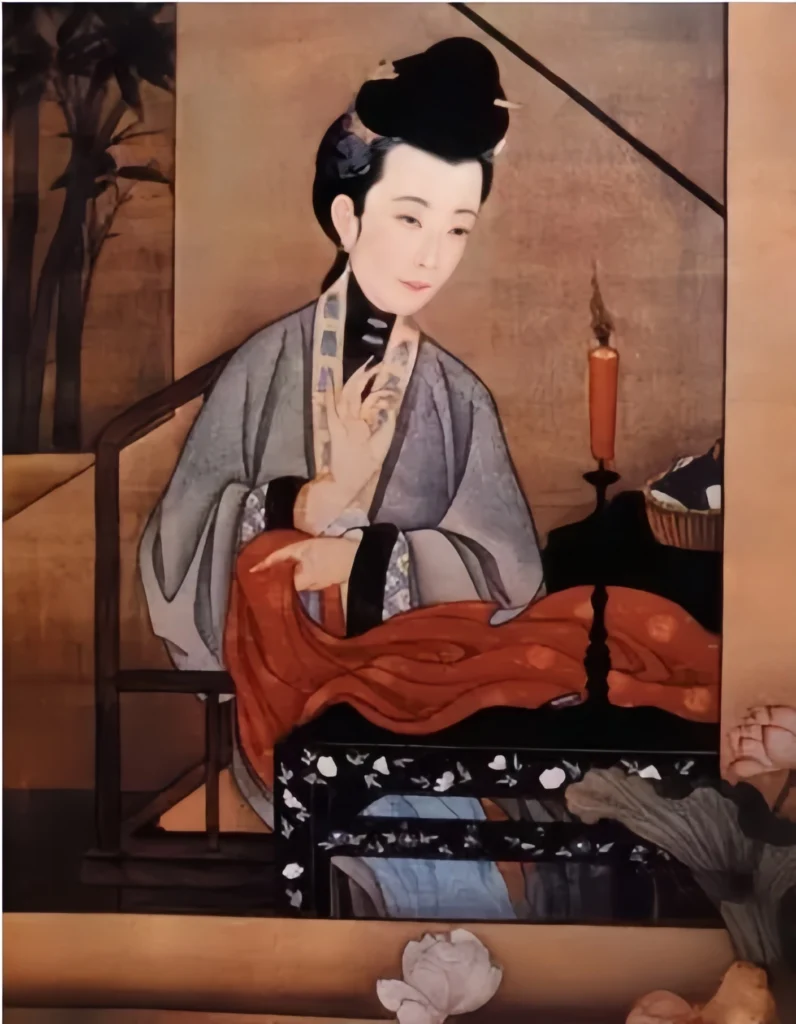
The Ming Dynasty was China’s most “everyday people” era. From novels and history books that survive today, you can see Ming Hanfu features hit a high point – super developed and full of life.
Chinese women always went for subtle beauty – all about inner glow and balance. “Not too thick, not too thin; just right length” was the golden rule.
Ming folks liked a wider range of looks, but moderate beauty still ruled. Curvy with a bit of strength (“plump but bony underneath”) was back in style.
Buttons Take Over
Ming introduced Hanfu buttons everywhere – metal, jade, you name it. Button-front long robes became everyday wear for women.
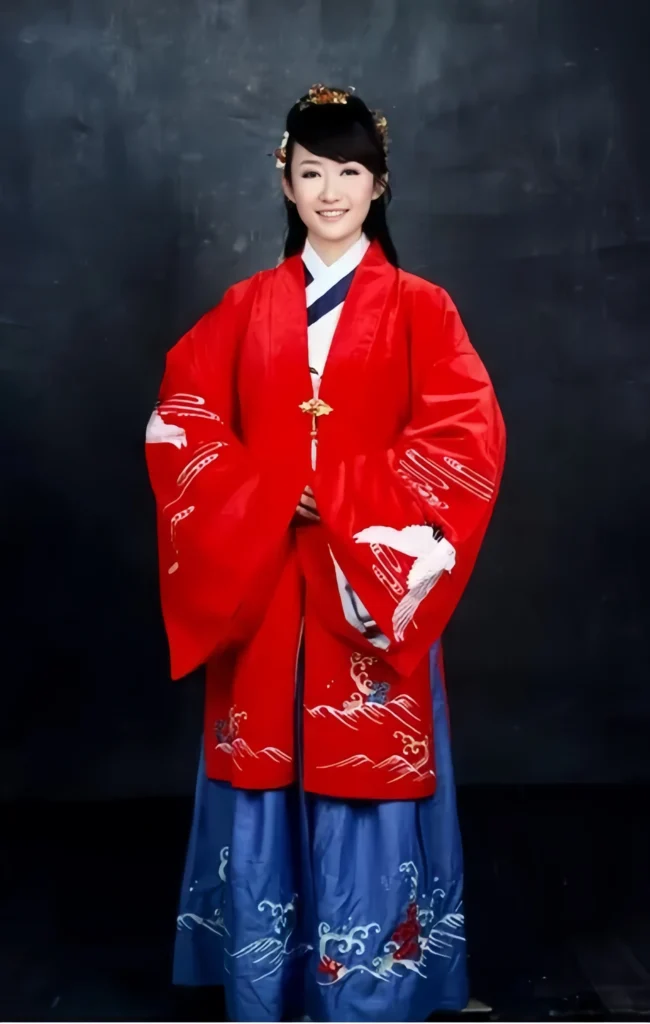
Another go-to outfit: short jacket on top, mamian skirt below. The skirt had a wide panel in front (like an ancient apron upgrade), with tiny pleats at the waist. Later, those pleats multiplied like crazy.

The Big Hanfu Shift in Ming
Ming Hanfu features? Hanfu buttons replaced ties – that’s the standout. But buttons started on formal wear; everyday stuff caught on late Ming.
Buttons weren’t new – they came from Yuan Mongol “braided robes.” Likely from minority groups in China, then boomed in Ming.
Compared to Tang: Ming flipped the ratios. Clothes got longer on top, skirts hidden underneath. Blame the cold snap in late Ming – winters dragged on, so jackets hit the knees. Hello, aoqun (jacket-skirt combo).
Ming inner layers even had stand-up collars, fastened with buttons.
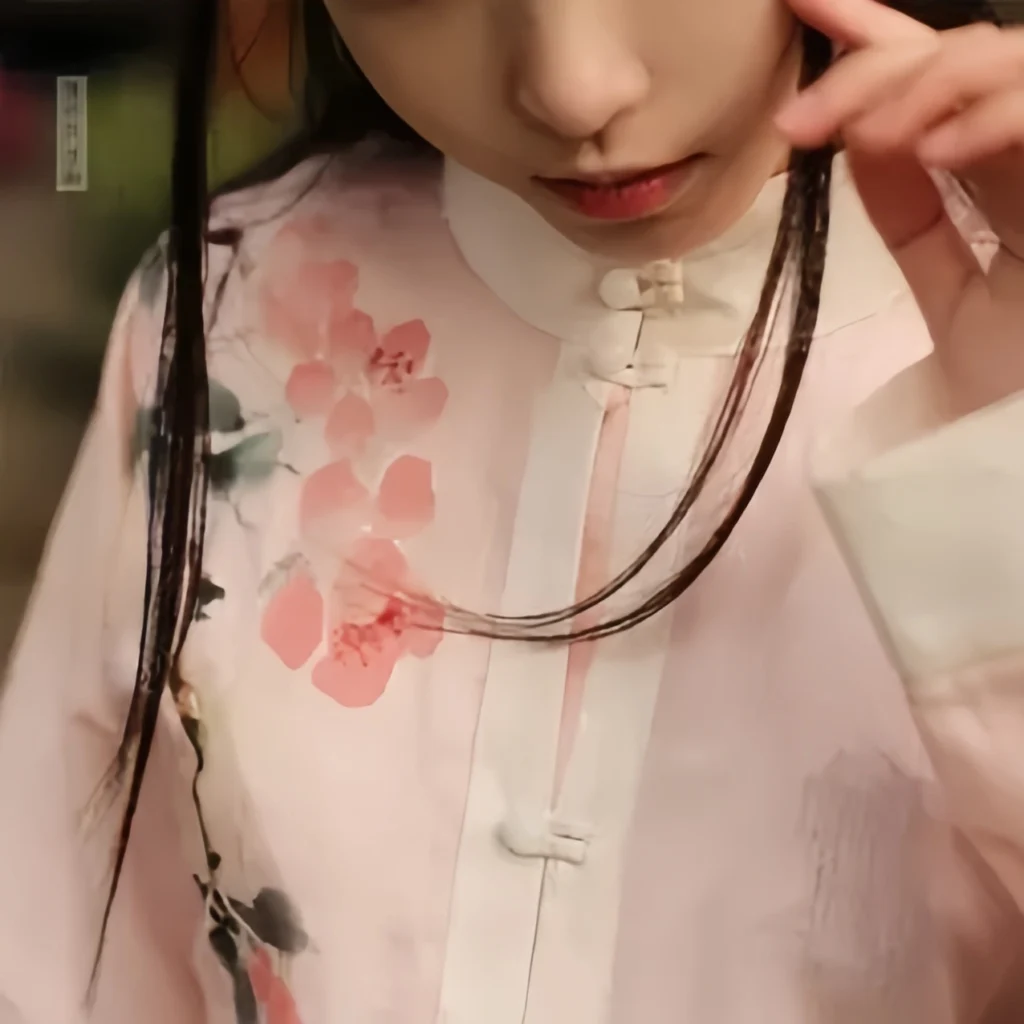
Makeup: Soft and Subtle
No more Tang’s bold, feathery brows. Ming loved thin, crescent-moon brows. Focus on finesse: “Skin like smooth fat, eyes like black lacquer, brows smoky green.”
Just a whisper of blush for that warm, gentle vibe. Check Ming palace portraits – ladies kept it light: faint rouge, red lips, brows shaped to fit the face. Sweet and steady, subtle Ming makeup.
Tops and Bottoms
Women’s tops: three collars, narrow sleeves, over three feet long, showing just 2-3 inches of skirt. Yangzhou trend: 2.8-foot jackets, 1.2-foot sleeves, fancy embroidered outer sleeves. Winter? Fur-lined with sable or fox.
Skirts early Ming: soft pastels. Chongzhen era pushed white, with 1-2 inch embroidered hems. Started with 6 panels, ended with 8 or 10.
Pleated waists were huge – fine or bold folds. Fancy ones: color-strip skirts with bird-flower embroidery on each strip, gold edges. Sew them to the waist for a phoenix tail skirt. Or hand-pleated satin for hundred-pleat skirts. Even 24-pleat “jade skirts”.
Started in Northern-Southern Dynasties, named in Sui-Tang, formal in Song.
Ming made xia pei everyday magic: long colorful scarf, 3.2 inches wide, 5.7 feet long. Drape over neck, hang in front with gold or jade weights. Looked like a rainbow – hence “cloud shawl.”
Ming beizi jackets: Same patterns as xia pei for ranks, but low officials got round flowers, no vines.
Beizi for everyone:
Nobles: formal, big sleeves, overlapping front.
Common folks: casual, straight collar, small sleeves.
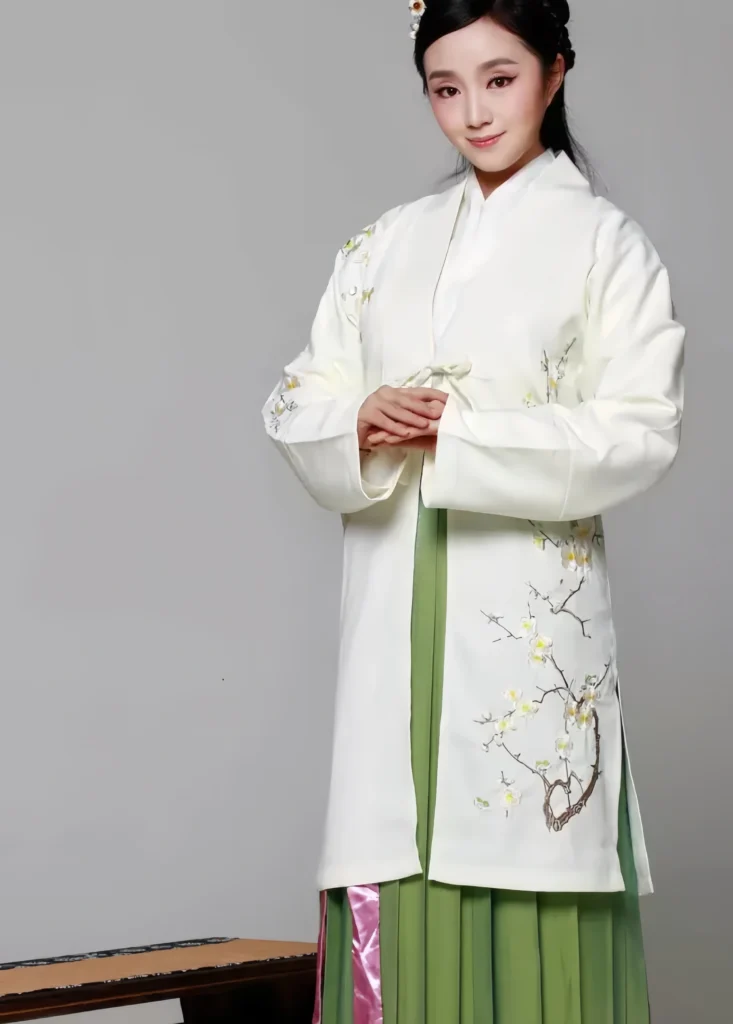
Accessories That Jingled
Ming Hanfu features loved chest bling – gold, pearl, jade goodies. Hanging ones: zhuiling (chest drops). On the front: qishi (seven things). Noisy walkers: jinbu (step stoppers). All called miscellaneous pendants.
Special set: gold chain with ring links holding tweezers, toothpick, ear spoon, tiny knife – real life tools turned fashion.
Started practical, ended pretty.
Fabric Rules by Class
From Ming Hui Dian: Nobles used any silk, gauze, whatever.
Commoners: Even formal wear stuck to rough purple cloth, no gold embroidery. Robes in purple, green, peach – no bright red, dark blue, or yellow. Flood year 14: Merchants in silk-cloth only; farmers in coarse silk; workers in brown. These Ming class clothing rules kept things strict.
But Ming paintings show the glam – noble ladies in red big-sleeve robes, everyday women in short tops + long skirts, tied with silk belts. Skirts galore: pleated, phoenix tail, moonflower.
Colors and Patches
Emperor Zhu = red rules. Purple? Banned from officials (thanks, Confucius hating purple stealing red’s spot).
Official robes: patches (buzi) showed rank – 40-50 cm squares, embroidered birds for civil, beasts for military, nine levels each.
Casual round-collar robes: Longer + wider sleeves = higher status.

Extra Layers and Crowns
Women layered beizi or cloud shoulders over skirts. Phoenix crown + xia pei: Wedding or big ceremony must-haves for queens – dragons, phoenixes everywhere, paired with the shawl.
Late Ming: Manchu armor and foreign influences brought buttons to collars and fronts.
Everyday Folks
Common clothes: Long or short, shirts or skirts – stuck to traditions but super varied. Wives in purple/green/peach. Men: Hair in buns, wide robes, long socks, shallow shoes.
Belts low on hips, tied with thin cords under arms.
Guys in blue straight robes, square flat hats. Before that: six-in-one hats (like half a melon), aka “unification caps” – six panels for “world united.” Zhu Yuanzhang’s design, symbolic peace. Started for servants, got popular – grandpa of Qing melon caps.
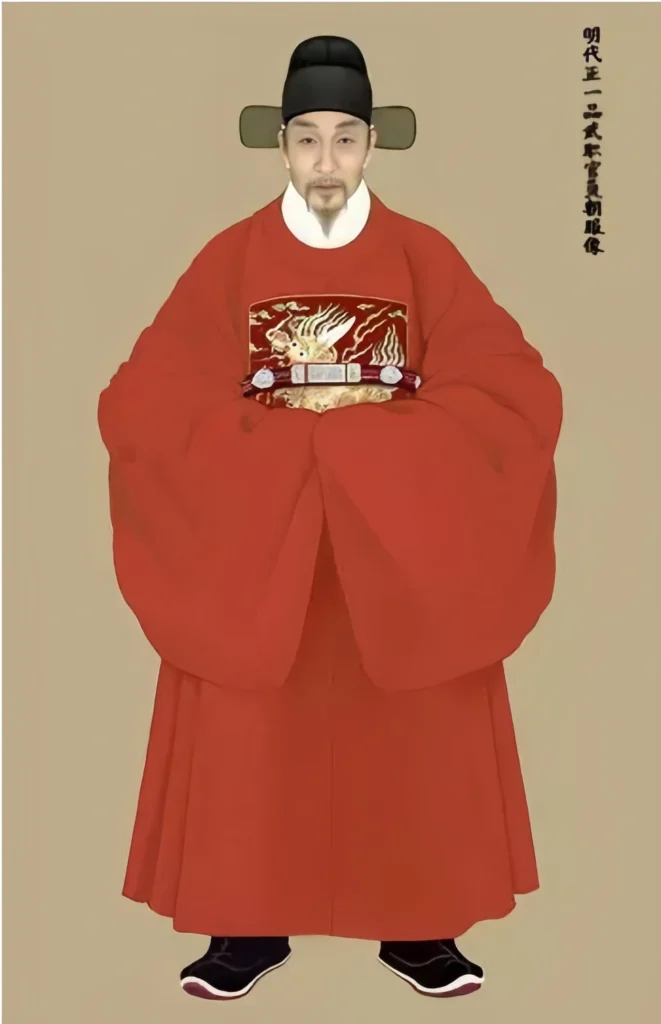
Official Outfits Quick List
Mianfu: Emperors stuck to one style since Song.
Court wear: Fancy crowns, leather hats, daily court robes.
Public service: Round collars for office.
Casual: Back to Tang-Song vibes.
Queen’s top: For big rituals.
Second queen outfit: Pheasant themes.
Noble lady formal: Full splendor.
Love Ming Hanfu features? Dive deeper with our Ming Hanfu styling tips! Check out our Hanfu guide for authentic tips!


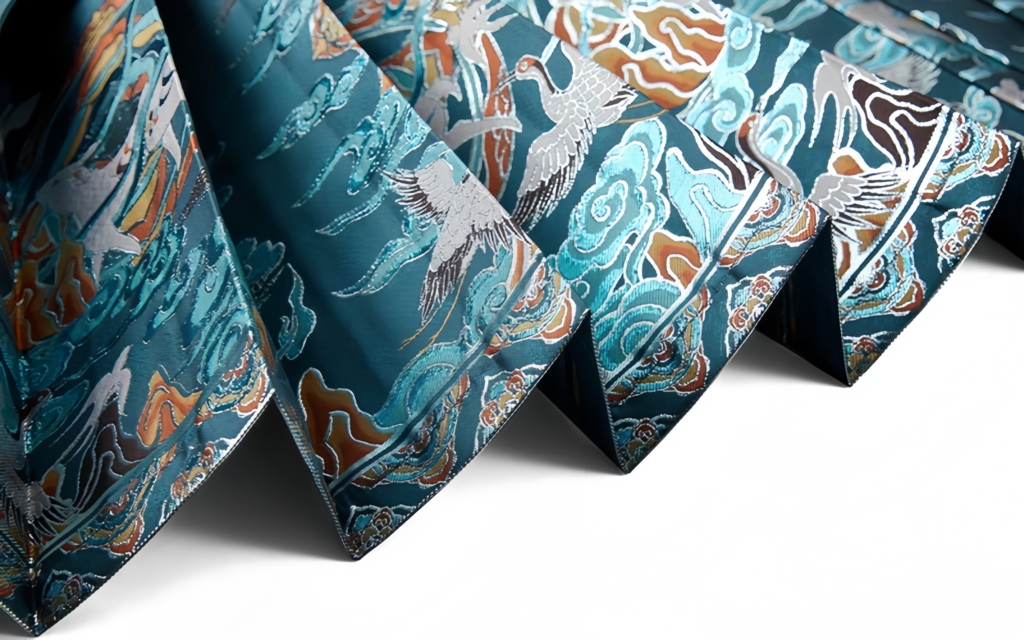

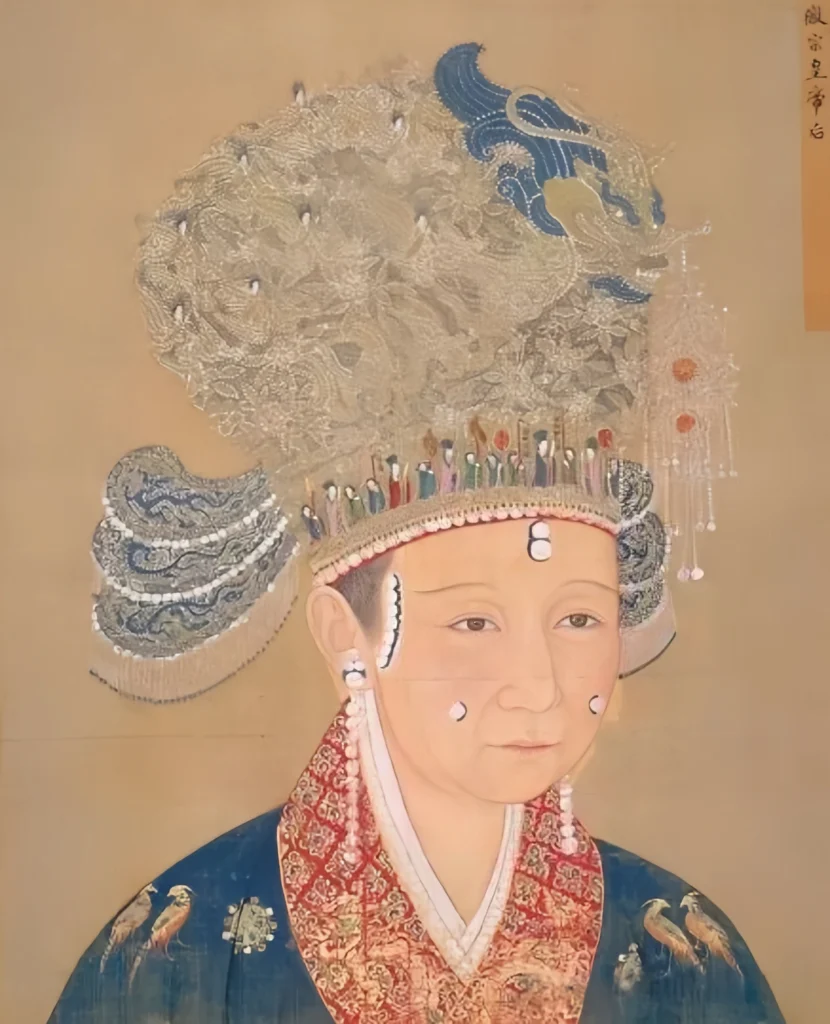
Responses